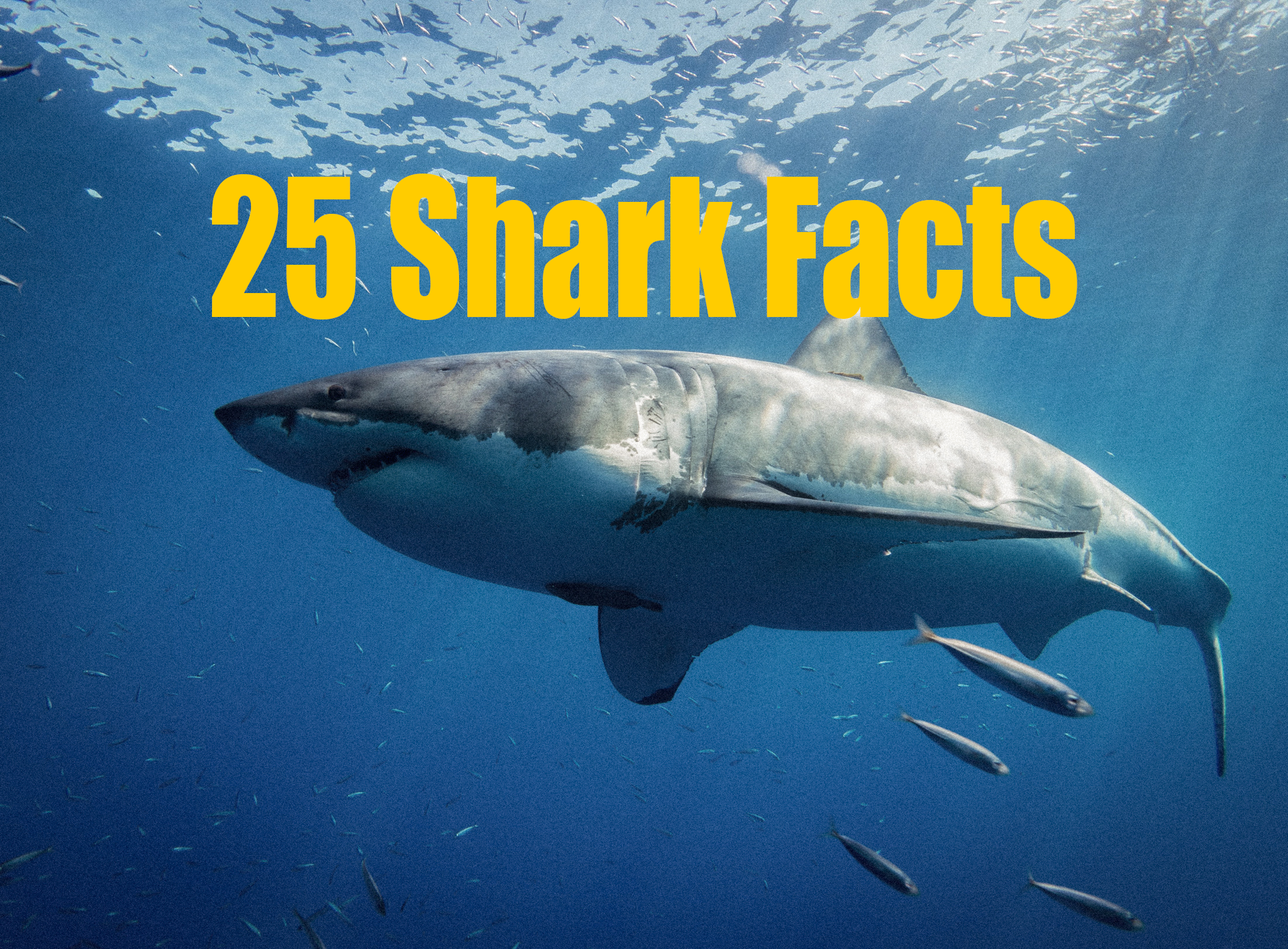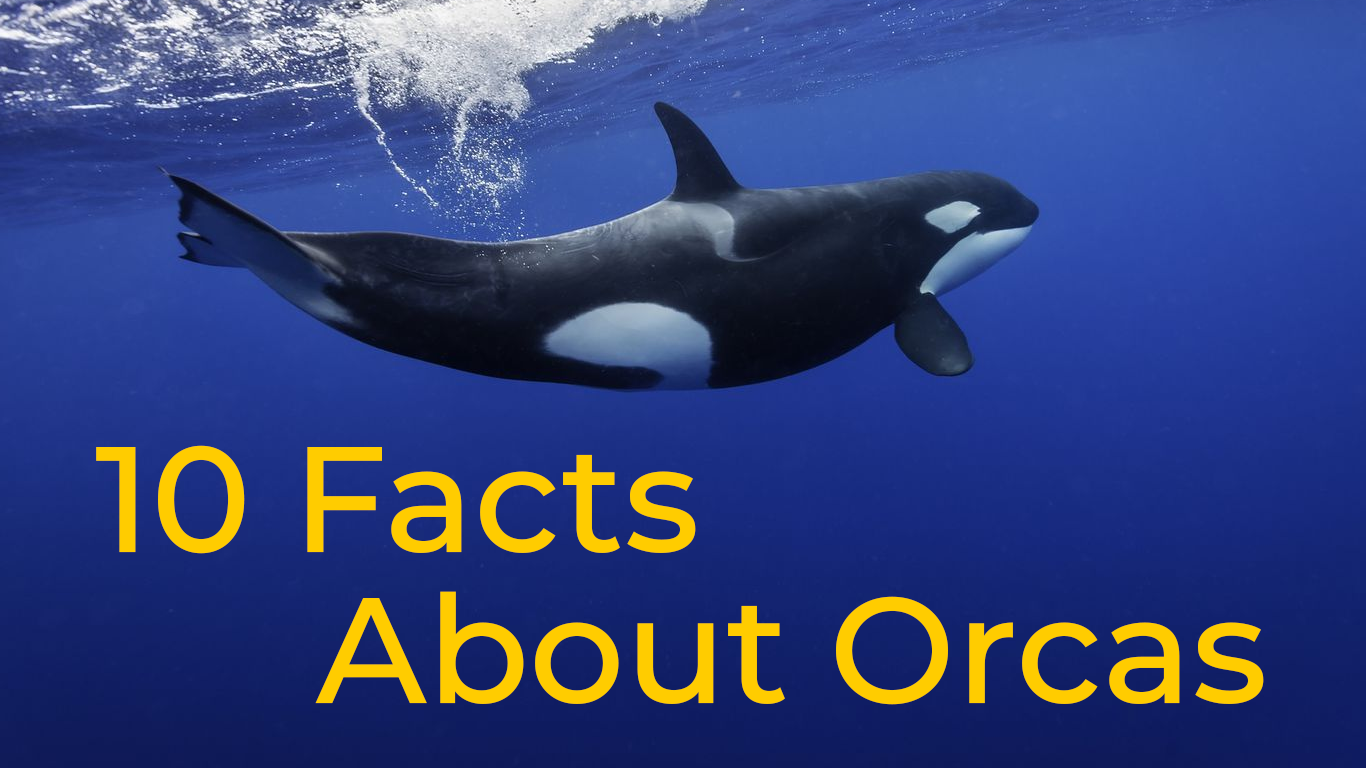MAYA BLEU 07/13/2022

25 Shark Facts
25 Fin-tastic
Shark Facts
Fin-tastic Facts: Test Your Shark Knowledge
Sharks are one of the most feared animals on the planet, yet these apex predators are also one of the most misunderstood. Thanks to Hollywood blockbusters and the sensationalist media, sharks have a bad reputation, but in reality, there is more to jaws than first meets the eye. How many of the below facts do you know about sharks?
1.) There are over 500 species of shark
Everyone knows the great white shark, but did you know there are over 500 different species of shark swimming in the ocean? Sharks have evolved to be of all shapes and sizes with unique adaptations to suit their environment. From the deep-sea-dwelling frilled shark to the walking epaulette shark, the ambushing tasselled wobbegong to the infamous bull shark, sharks are more than Jaws.
2.) Sharks do not have bones
Sharks have cartilaginous skeleton that makes them lightweight and agile predators as it allows them to move rapidly through the water without using too much energy.
3.) Sharks can detect electricity
Sharks have a sixth sense – they can detect electricity. Using specialised organs near their mouths known as the ampullae of Lorenzini, sharks can detect the earth’s electromagnetic field and the tiny electrical signals from the heartbeats of other animals. This enables them to hunt and navigate the global ocean.
4.) Sharks have been on the planet longer than trees
Sharks have been on the planet for more than 400 million years and survived five mass extinctions – including the dinosaurs. Yet they are facing extinction at the hands of humanity.
5.) Different sharks reproduce in different ways
Sharks also have diverse ways of producing pups – these include producing eggcases (oviparity), birthing live young from internal eggs (ovoviparity), live birth (viviparity) and asexually.
6.) Whale sharks are the largest fish on the planet
Reaching a staggering 18.8 metres at their longest, whale sharks are the world's largest living fish. Despite their enormous size, whale sharks are like big friendly sharks and are incredibly docile and approachable.
7.) Great white sharks are the largest predatory fish on the planet
The most famous shark on the planet, the great white shark, grows on average to 4.5 metres in length, though individuals have been recorded exceeding this length and weighing up to 5 tonnes. It predominantly inhabits coastal waters around the United States, South Africa and Australia, where adults predate on seals.
8.) Greenland sharks are the world’s oldest living vertebrate
On average, scientists estimate Greenland sharks could reach ages that exceed 400 years – that means there could be Greenland sharks swimming around the ocean today that were alive during the 17th century!
9.) Sharks inhabit every ocean on the planet
Sharks can be found in all seas worldwide and have evolved to fill every niche. Their incredible diversity means they can survive in a wide range of habitats from the deepest depths of the ocean to the warm tropics, the chilly waters of the Arctic to the wide-ranging pelagic.
10.) Megalodon was the largest shark ever to live
One of the largest fish to ever exist, the Megalodon, was once the biggest shark in the world. Experts anticipate that it grew to between 15 and 18 metres – three times longer than the largest recorded great white shark.
11.) The smallest shark in the world is the dwarf lantern shark
Inhabiting the deep sea, the world’s smallest known shark is rarely observed by humans in its natural habitat but has been seen a handful of times off the northern tip of South America at depths ranging from 283-439 metres.
12.) Mako sharks are the fastest shark in the sea
Reaching a top speed of 46mph with an average cruising of 31 mph, the mako shark is the fastest in the ocean. It’s often referred to as the ‘cheetah of the ocean’.
13.) Shark embryos attack one another
Survival of the fittest begins long before birth for some shark species. Baby sand tiger sharks are known to practice in-vitro cannibalism – the strongest siblings devour the weakest before birth in an attempt to be the one that is ultimately born!
14.) Not all sharks live in saltwater
Bull sharks can survive in brackish water as well as the salty depths of the ocean. You can often find them residing in the mouth of estuaries – in fact, the world’s largest bull shark ever caught weighed over 1000 pounds and was found in the Breede River in South Africa.
15.) Hammerhead sharks have 360-degree vision
Thanks to their uniquely evolved head – known as a cephalofoil – hammerhead sharks can benefit from a 360-degree view of the world.
16.) Some sharks glow in the dark
Roughly 10% of shark species are thought to be able to produce light via a process known as bioluminescence. Scientists have recently discovered three more deep-sea species that glow in the dark – the kitefin shark, the blackbelly lanternshark, and the southern lanternshark. It’s thought this may help them attract prey, evade predators or find a mate in the dark abyss.
17.) Thresher sharks use their tails to corral their prey
With their elongated tails, thresher sharks use a stunning strategy to whip their prey into a frenzy before eating them.
18.) Sharks can be aged using their vertebrae
Similar to tree rings, sharks deposit calcium in their vertebrae for every age of growth. Scientists can use carbon dating technology to determine an approximate age for an individual shark – but unfortunately, the shark needs to be dead for this procedure.
19.) Shark skin feels like sandpaper
Shark skin is equipped with a specialised feature that enables them to cut through the water quickly – dermal denticles. These unique ‘teeth-like’ scales are modified teeth covered with hard enamel that scientists think evolved from the shark's jaw.
20.) Sharks are slow-growing and late-maturing
Sharks have a highly unique life history for sharks. They are slow-growing and late maturing, so when they finally reproduce, they produce a small number of pups with each reproductive cycle. Ultimately these characteristics make them highly vulnerable to population pressures. Did you know scientists think that female great white sharks may take 33 years before they’re able to reproduce?
21.) Sharks can go into a trance
When flipped upside down, sharks induce a state known as ‘tonic immobility’, similar to a trance. Scientists believe this may have evolved for mating purposes as the male often needs to bite down on the female to keep her in the correct position.
22.) Shark jaws are not attached to their skull
Sharks thrust their jaws forward when hunting to maximise their chances of ensnaring their prey. This is known as jaw suspension.
23.) Sharks can get cancer
Rumour has it that sharks can’t get cancer, but this is another myth about sharks. Sharks do get cancer but at a lower incidence than humans.
24.) You’re more likely to be killed while taking a selfie than by a shark
Statistically, more people die every year from taking a selfie, falling out of bed and driving than by a shark. Nobody is scared of taking a selfie, so why worry about sharks?
25.) The biggest threat to sharks is humans
100 million sharks are estimated to be killed every year. Overfishing for their meat and fins is the primary driving force behind this enormous number, and all over the world, their numbers are depleting rapidly. It’s up to us to make a change so that sharks have a chance of surviving.
Interested in our candles? Shop our eco-friendly candles here


6 comments
iam god
god
gay
santana
gay
santana
gay
santana
Khkvkv
Jesus
Vjgkgkg
Jesus
Leave a comment
This site is protected by hCaptcha and the hCaptcha Privacy Policy and Terms of Service apply.